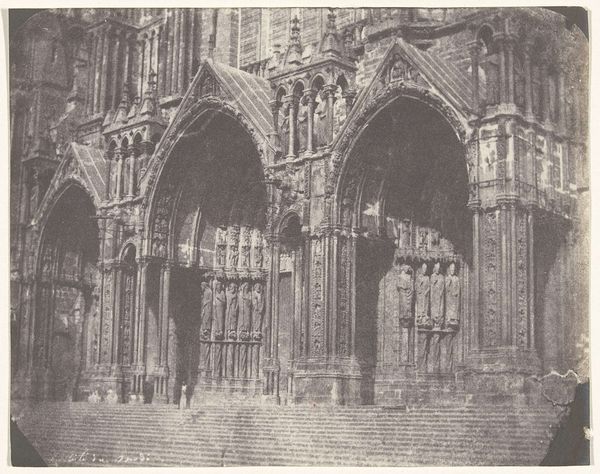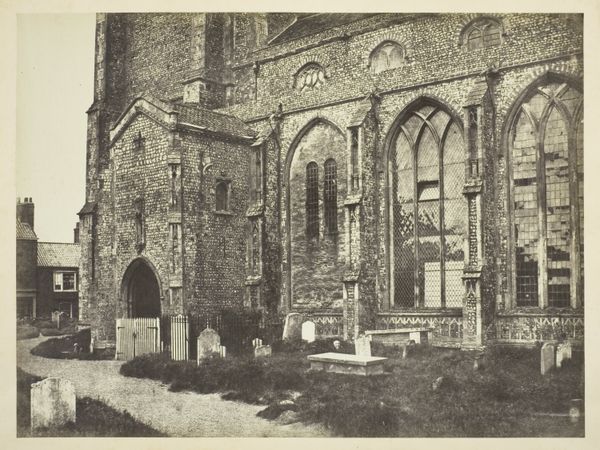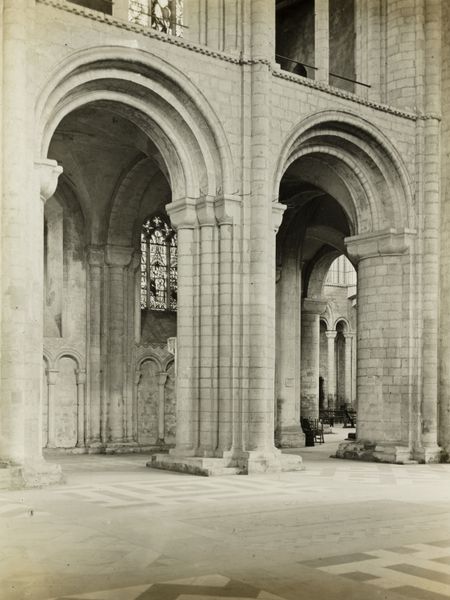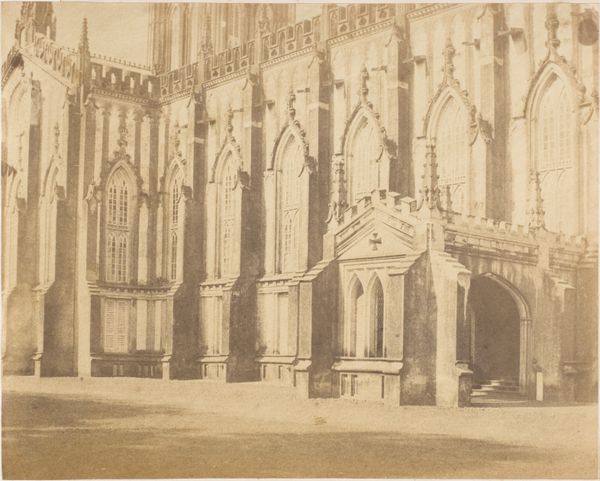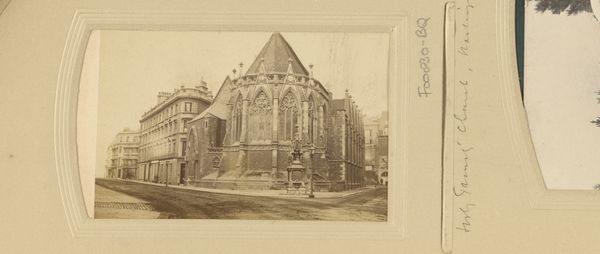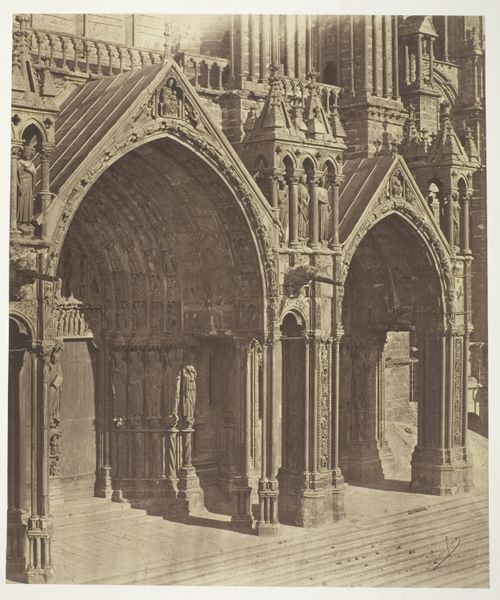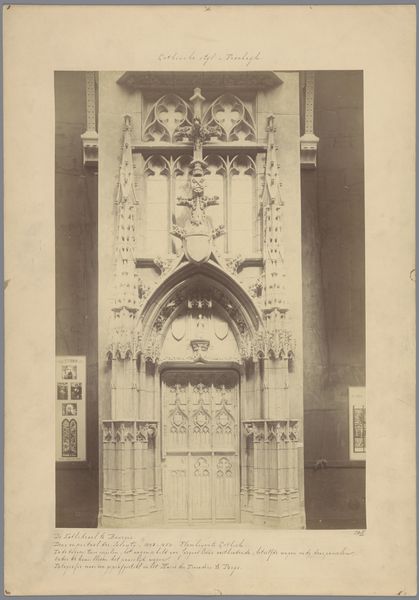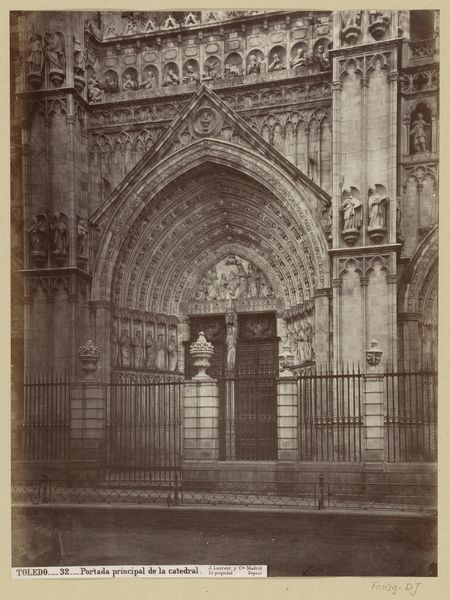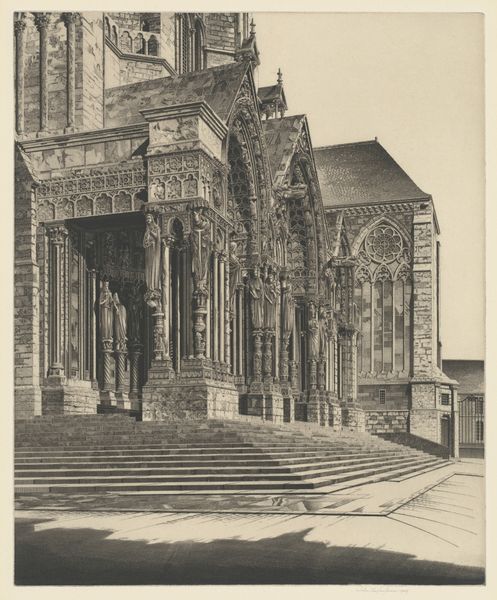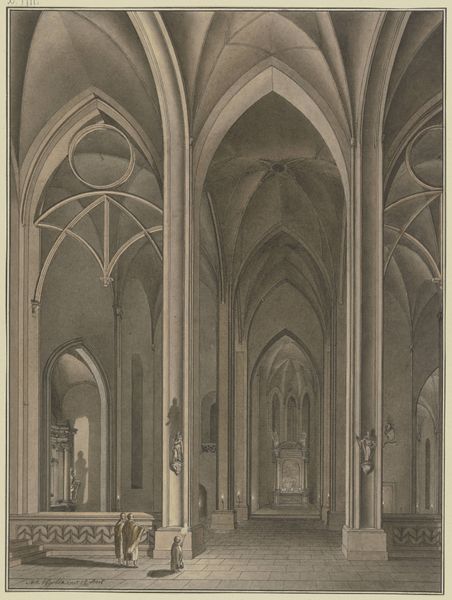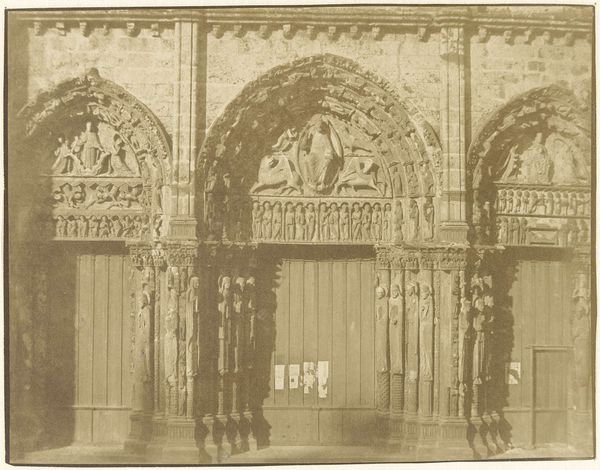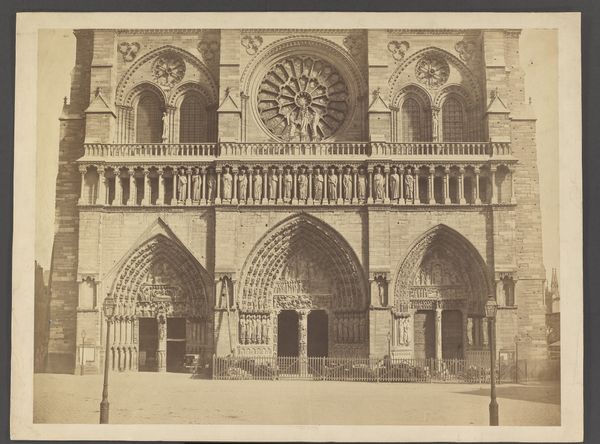
photography, gelatin-silver-print, architecture
#
landscape
#
photography
#
romanesque
#
gelatin-silver-print
#
architecture
Dimensions: height 249 mm, width 354 mm, height 296 mm, width 432 mm
Copyright: Rijks Museum: Open Domain
Editor: Here we have Mèdèric Mieusement’s gelatin silver print, "The Portals of Chartres Cathedral, North Side", created between 1870 and 1894. The sheer scale of the cathedral's facade, rendered in sepia tones, is impressive. I wonder, how do you see the role of this image in the broader context of the time? Curator: It’s essential to understand the sociopolitical forces at play then. Photography in the late 19th century was rapidly evolving, wasn’t it? And large architectural studies like this catered to a growing fascination with historical preservation, fuelled in part by anxieties over rapid industrialisation and urbanization that were transforming French society. Editor: That's interesting! So this isn't just about appreciating architecture, but also about capturing a vanishing past? Curator: Exactly! Chartres, with its magnificent cathedral, embodied France’s cultural heritage, and images like this helped construct a national identity tied to this past. Mieusement was likely commissioned to document the cathedral, and therefore had a public and political dimension. Does the fact that he focused on the North side tell you anything? Editor: I see… perhaps it was chosen for its specific sculptures or some historical relevance of that side? The image presents a really solid image in monochrome, emphasizing intricate carvings but I am not sure how. Curator: Think about what kind of viewer was this image intended for. The middle class could buy and display images like these, therefore supporting both the conservation and also boosting national identity. Now do you see a difference? Editor: I do! I initially just saw a beautiful, detailed photograph. But understanding the historical context makes it clear that it also served a role in shaping national identity and collective memory. Curator: Precisely! By focusing on such iconic structures, photographers actively participated in the construction of collective identity. And the very act of photographing and disseminating these images influenced how future generations would understand the role of the art, society and culture.
Comments
No comments
Be the first to comment and join the conversation on the ultimate creative platform.
